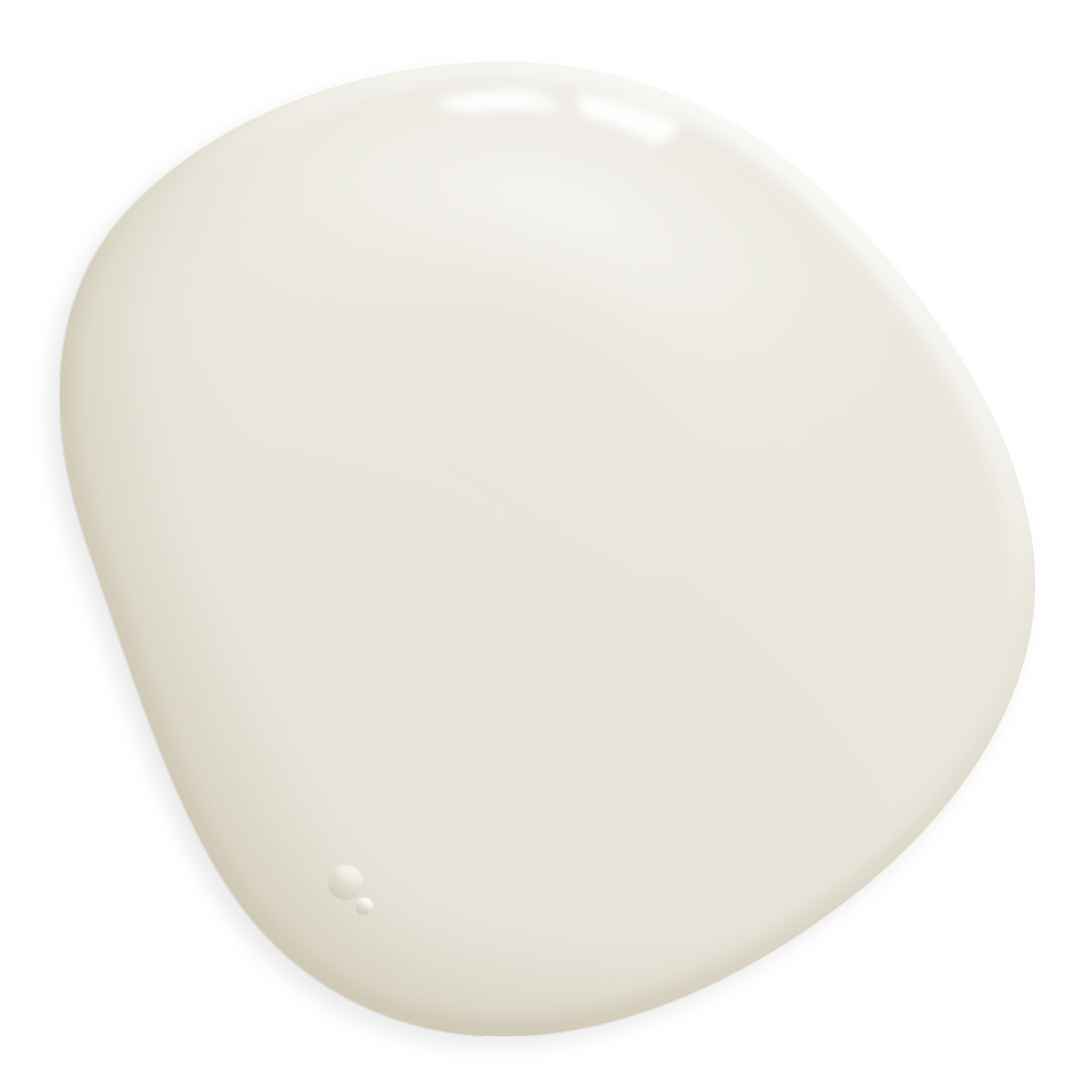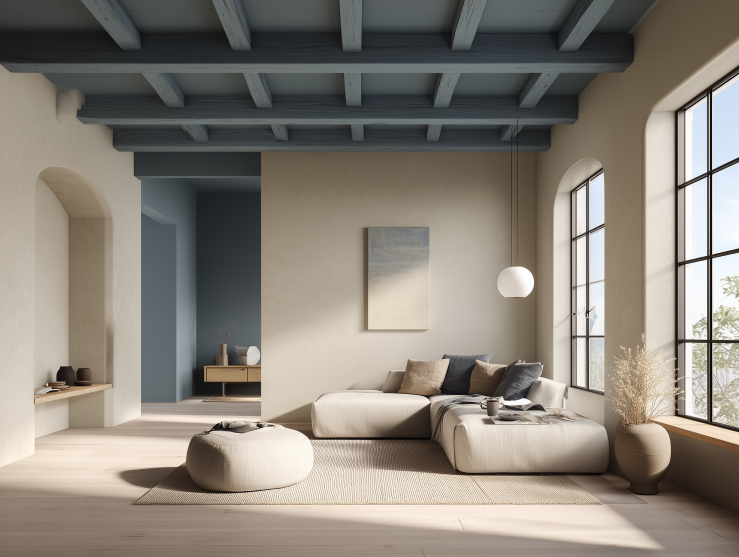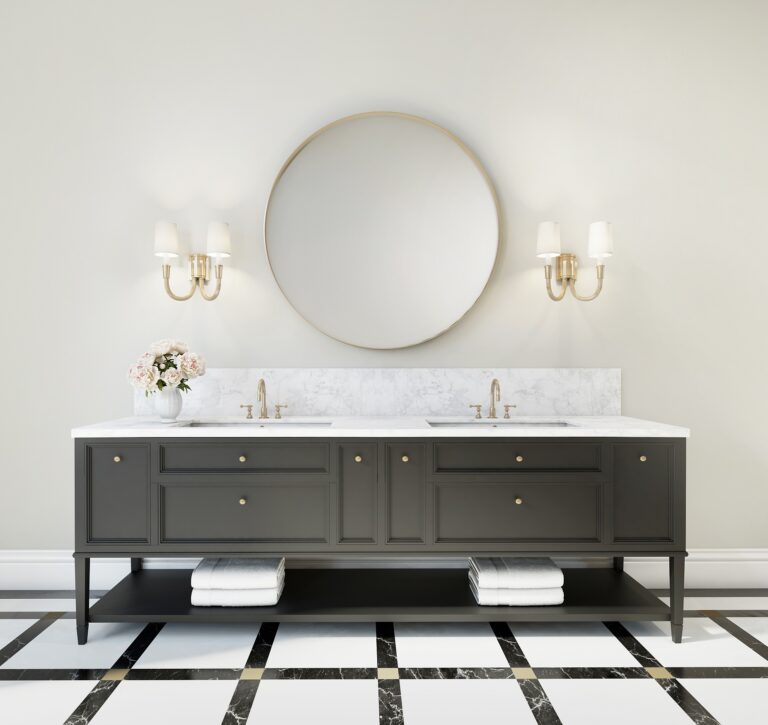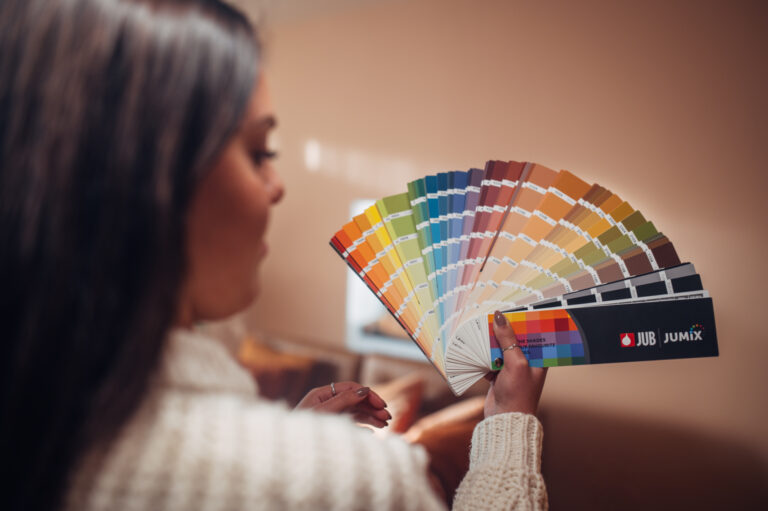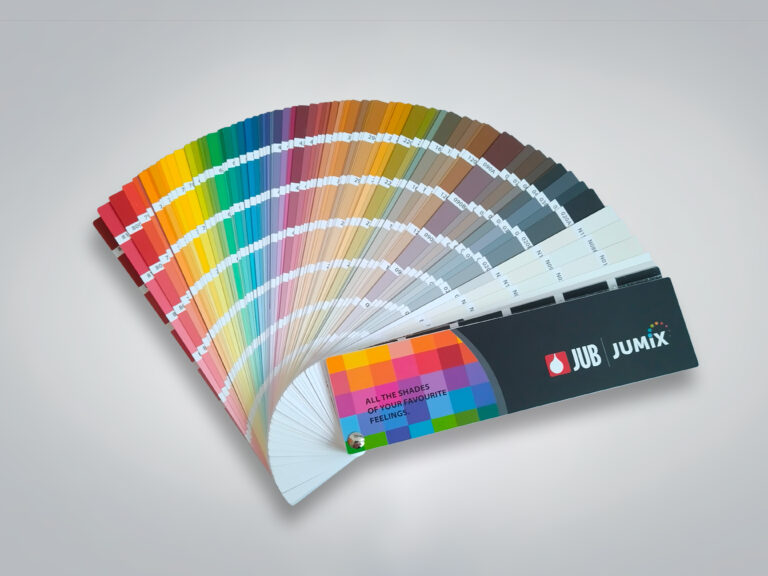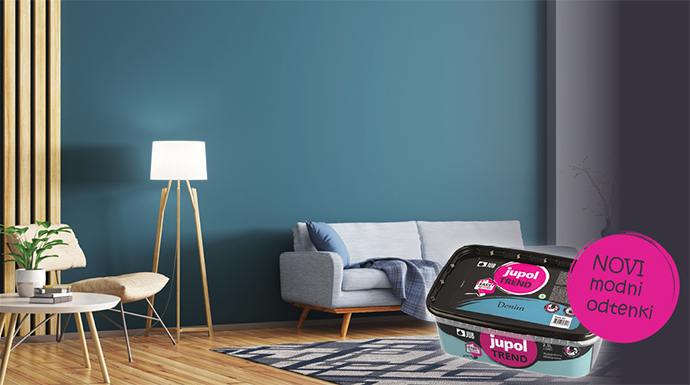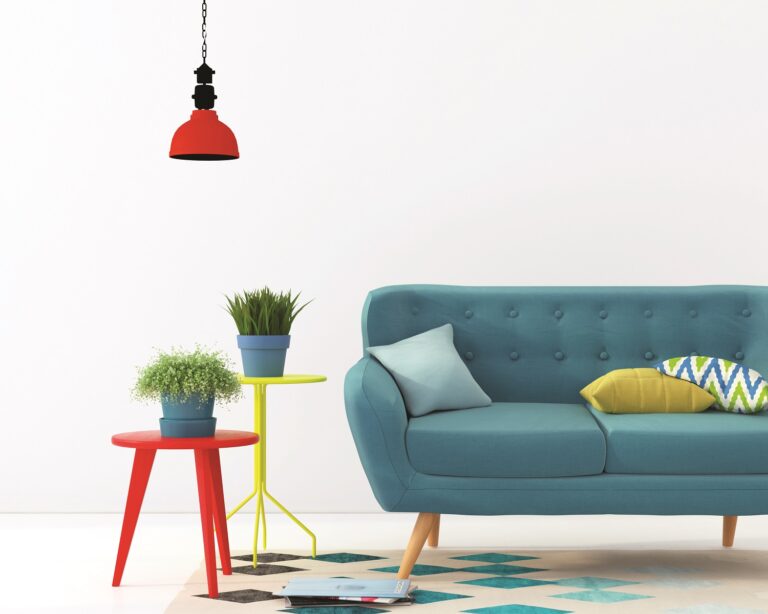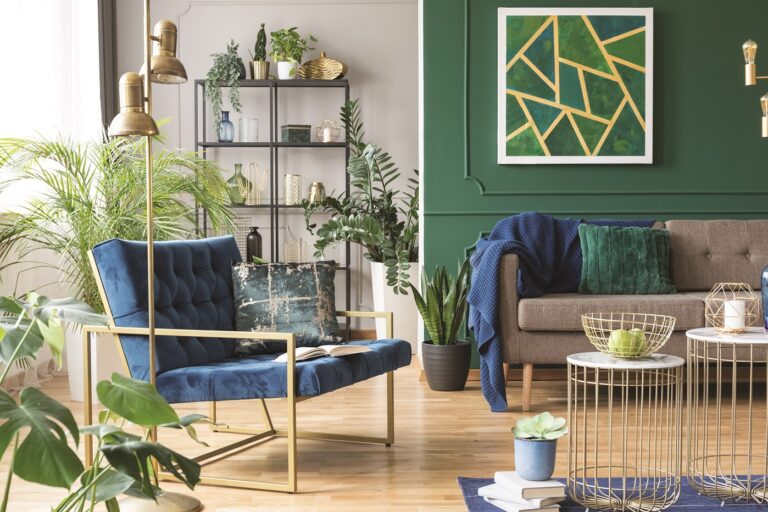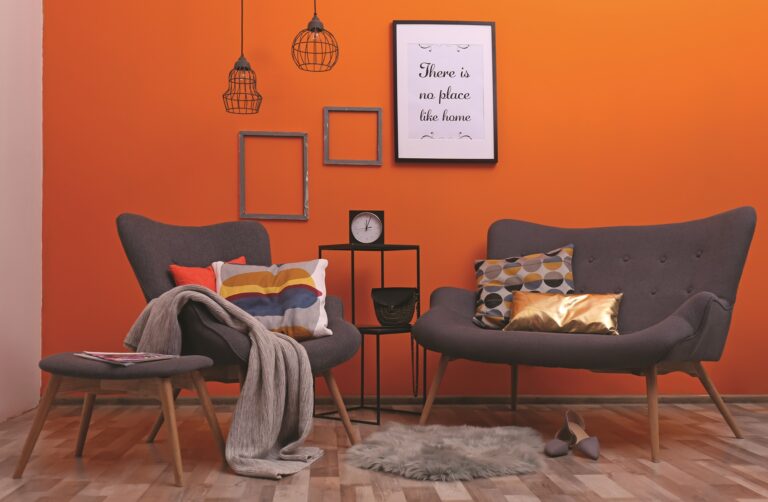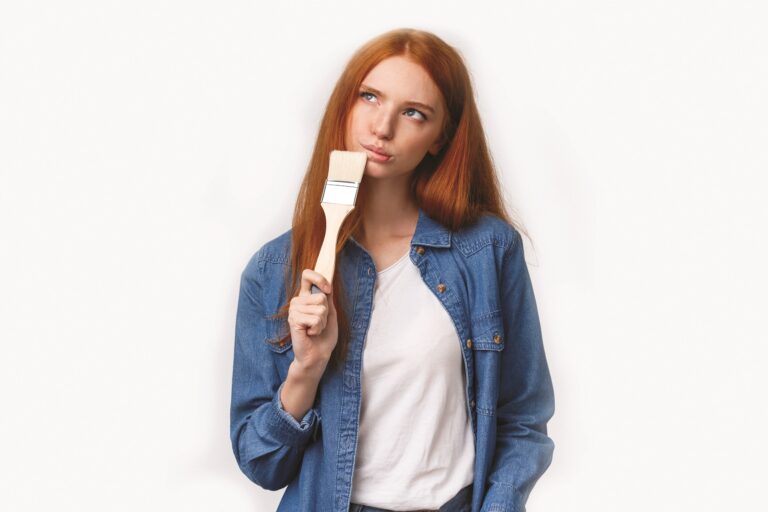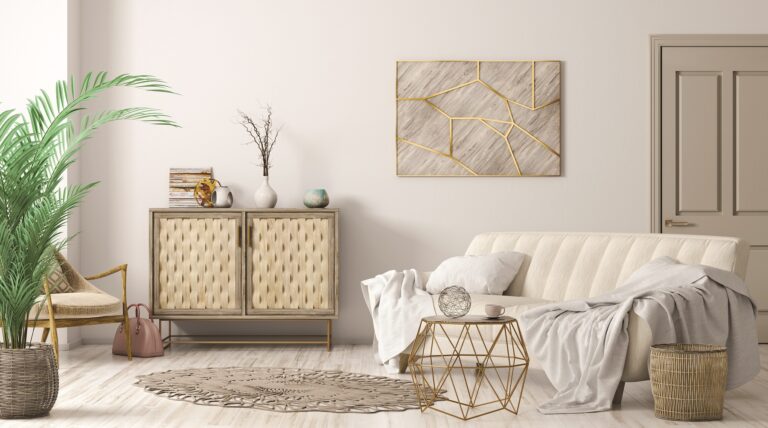Colours have a greater influence on us than we realize. Just by painting the walls, we can completely change the appearance of the rooms, because the colours brighten it, give it energy, improve the mood and create different atmospheres.
With the help of colours, we can seemingly enlarge or reduce the space, move the elements further or closer, emphasize the purpose of the space or eliminate spatial deficiencies.
With the combination of colours and natural and artificial light, we achieve different feelings in the space, such as coolness and freshness, warmth and coziness, lightness and playfulness or solemnity and elegance.
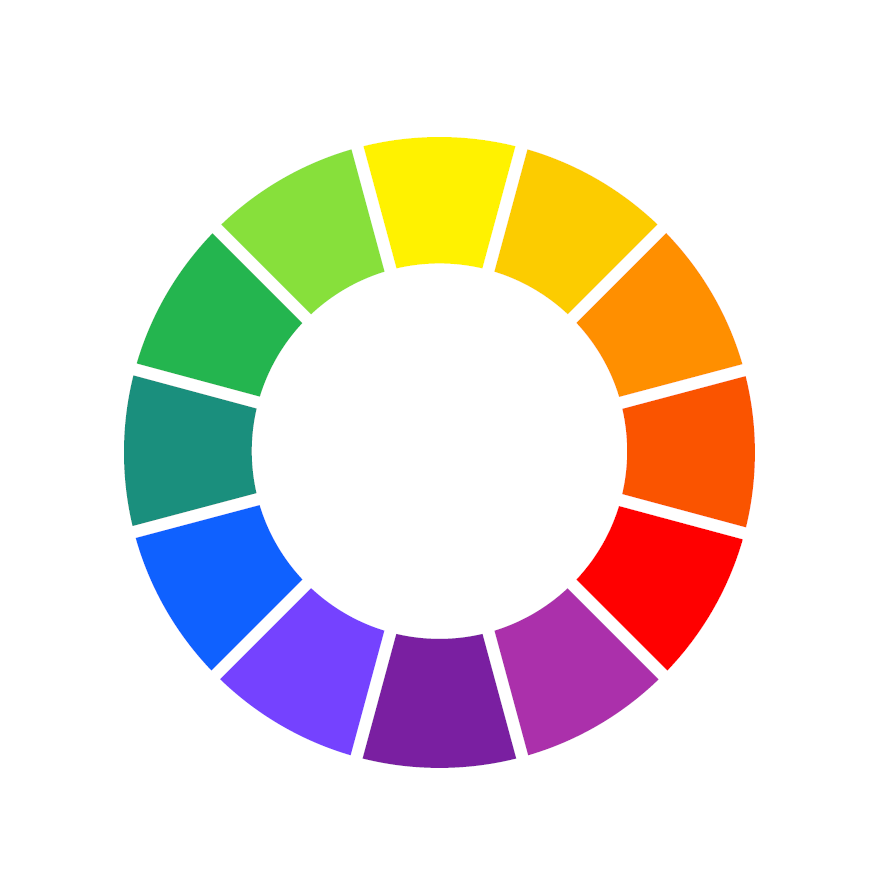
A colour wheel is an abstract, systemically arranged, completed colour composition in which individual colours are arranged according to their spectral value. All the colours of the colour wheel are in a certain mutual relationship, where they appear as primary, secondary, tertiary, or complementary.
Red, yellow, and blue are commonly known as primary colours. Their secondaries are green, orange, and purple. Tertiary colours are green-yellow, yellow-orange, orange-red, red-purple, purple, or blue purple and blue-green (teal). Each subsequent colour shade is obtained by mixing two adjacent shades.
Dimensions of colours
Colour has three dimensions: hue, brightness, and saturation. By adding white, black, and grey, countless new shades can be obtained from the basic colour shade.
Colours to which we add black or white (colours which we lighten or darken) lose their purity or saturation. Adding a neutral grey most directly and effectively “soils” a particular colour. Of course, different colours react differently to the addition of grey, white, or black. Yellow mixed with black becomes greenish, red mixed with white becomes pink, purple mixed with white becomes more vibrant.
- HUE: These are pure colours that change along the perimeter of the colour wheel and differ from each other. They travel from yellow, orange, red, etc.
- BRIGHTNESS: Two or more colours can have the same colour hue but different levels of brightness. If you add black or white to a colour shade, we get a lighter or darker shade.
- SATURATION: The intensity or purity of a colour shade changes if grey is added to the colour tone. We would colloquially say that the shade is more “destroyed”, silenced.
Contrast between warm and cool shades
Shades in the colour wheel are divided into warm and cold. Cold shades are blue, green, and purple, while warm shades are yellow, red, and orange. We can also add an undertone to each colour by adding white, black, and grey, which affects the brightness and intensity of the shade. Pure spectral colours are rarely used in interior design. We usually use “muted” grey, shaded black or lighter white shades.
Warm and cool colour shades create different feelings in the space.
| Warm shades sunny close exciting hard dry earthy |
Cool shades shady far calming easy moist heavenly |
How to achieve colour harmony in a room
To create true colour harmony in your home, you need to understand which colours work well together and why. When we talk about colour harmony, we are evaluating the combined effect of two or more colours or colour combination.
According to art theory, colours can generally be combined in three different ways, depending on their mutual relationship in the colour wheel. We have monochromatic, analogous, and contrasting colour schemes or harmonies.
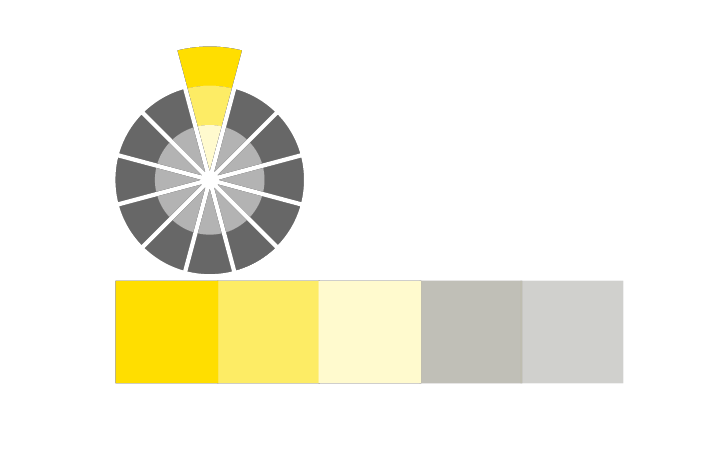
Monotone or monochromatic harmony
In monotone harmonies, only one colour is used for combining, but in several shades. In this way, we play with lighter and darker tones and in this way create a “diverse” space.
Related or analogous harmony
In analogous harmonies, we combine colours that are related or that lie next to each other on the colour wheel, such as yellow, orange and red.
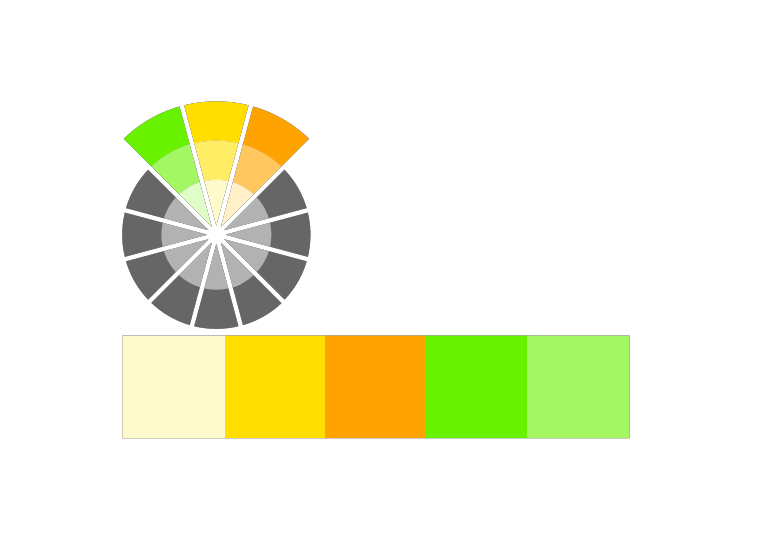
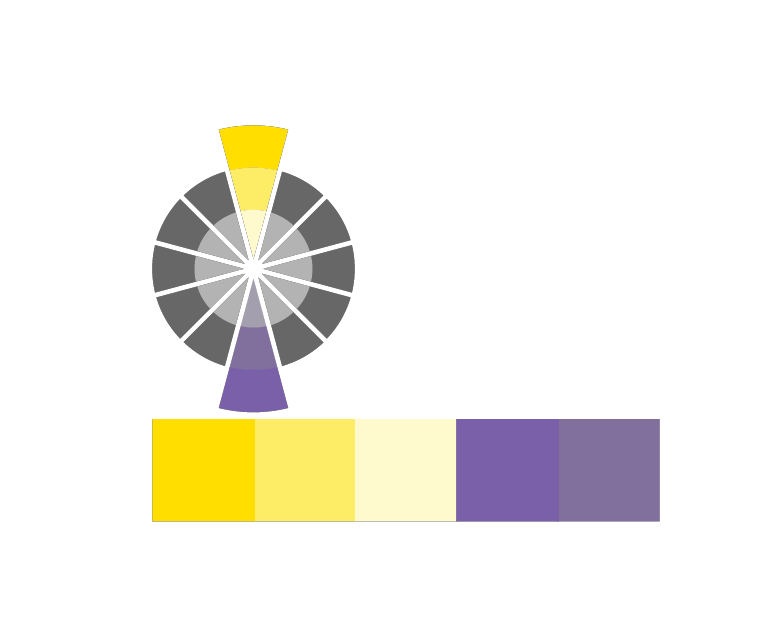
Contrasting or complementary harmony
Contrasting harmonies represent combinations of colours that lie opposite each other in the colour wheel: red and green, yellow and purple, orange and blue, etc.
